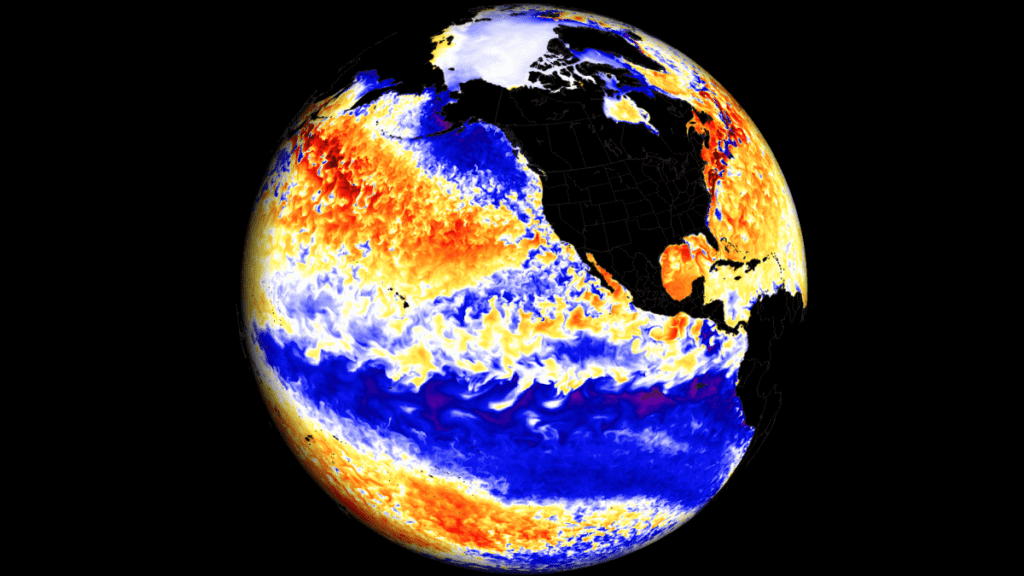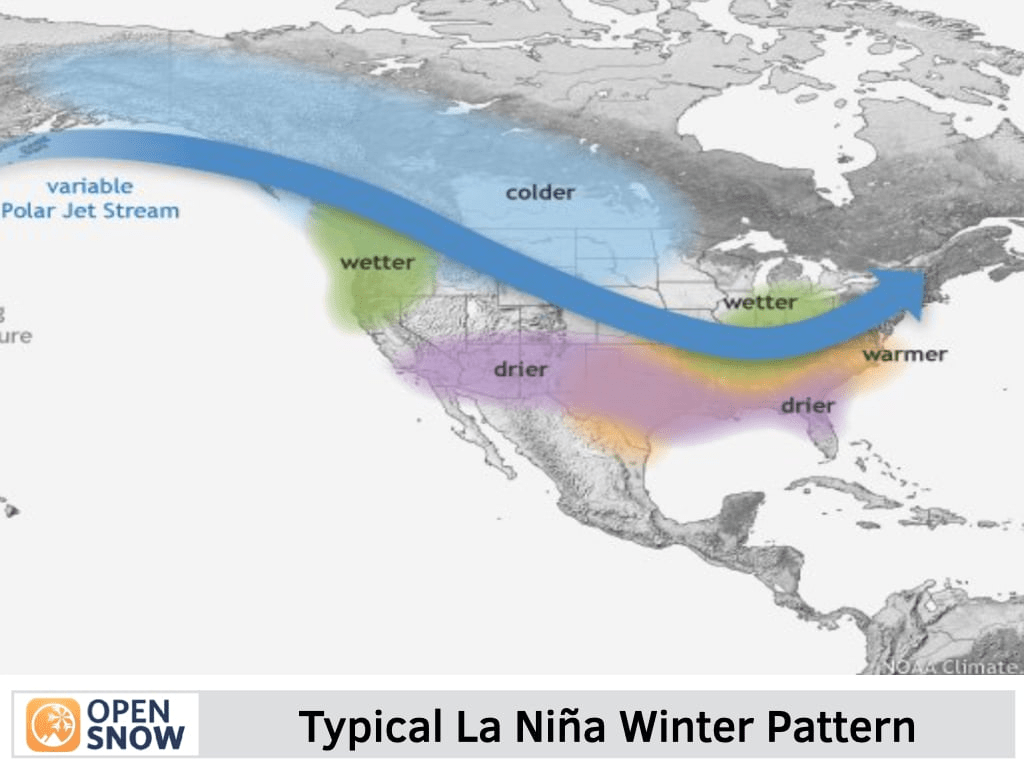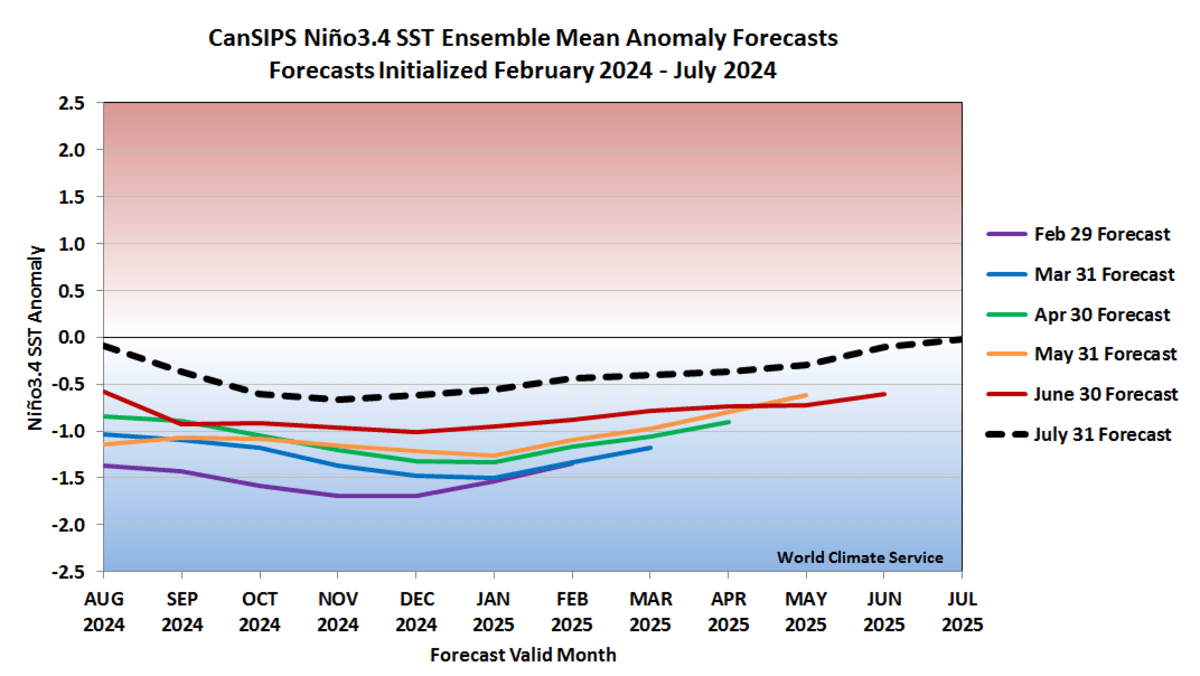La Niña is a naturally occurring climate phenomenon that causes a cooling of ocean temperatures in the Pacific, but its reach extends far beyond the ocean. As we look toward the winter of 2024-2025, scientists are predicting its effects could be felt in several regions, including Europe. This shift could bring more extreme weather and create new challenges in an already unpredictable climate.
What is La Niña?
La Niña is the flip side of El Niño, where the Pacific Ocean cools instead of warming. This cooling, while confined to the central and eastern Pacific, sets off a complex chain reaction in global atmospheric patterns that can alter weather systems thousands of miles away. The cooler waters suppress the normal flow of warm surface water, which in turn affects wind patterns, ocean currents, and even the jet stream. These changes are far-reaching and unpredictable, making La Niña one of the most impactful climate phenomena we observe.
For decades, this phenomenon has been known to bring wetter-than-usual conditions to Southeast Asia and Australia, often resulting in heavy rains and increased risk of floods. On the flip side, regions like parts of South America and the southwestern United States frequently experience drier and hotter conditions, leading to droughts that can severely affect agriculture and water supplies. La Niña’s influence extends beyond these familiar patterns, creating a ripple effect that can disrupt food production, livelihoods, and infrastructure in affected areas.
The repercussions of La Niña stretch to Europe as well, where its effects are less consistent but no less significant. In some cases, La Niña may bring colder winters, as shifts in the jet stream channel Arctic air toward the continent. In others, Europe could see unusual shifts in precipitation, such as drier conditions in regions accustomed to wet winters, which could impact water resources and agriculture. La Niña’s global influence highlights the intricate and interconnected nature of the planet’s climate systems, reminding us that even seemingly localized events in one part of the world can have widespread consequences elsewhere. As climate change intensifies, the effects of La Niña and other climate phenomena are expected to become even more unpredictable and extreme, underscoring the need for global cooperation and preparedness in mitigating these far-reaching impacts.

What to Expect for Winter 2024-2025
For this upcoming winter, La Niña is predicted to affect parts of Western Europe, potentially leading to drier-than-usual conditions. While this may seem like a break from the usual rainy European winter, it could spell trouble for agriculture and water supply. But despite the cold that La Niña brings to certain areas, it won’t completely undo the broader warming trend that we are seeing due to climate change. This means that while some regions may experience temporary cooling, the planet’s overall climate is still heating up, leading to unpredictable weather patterns that challenge both humans and ecosystems.
The impacts of La Niña won’t just be felt in Europe. Across the globe, regions might see everything from droughts to floods, highlighting the complexity of managing natural disasters in a world where climate extremes are becoming more common.
How the UN is Preparing for La Niña
The United Nations, aware of the dangers posed by extreme weather, is acting swiftly. They’ve launched a global appeal to help vulnerable communities brace themselves for the upcoming challenges. The UN’s plan isn’t just about immediate relief; it’s about long-term resilience.
They’re providing farmers with drought-resistant seeds, essential for growing crops in tough conditions. They’re also focusing on keeping livestock healthy through feed and disease protection, crucial for communities that rely on animals for survival. Financial aid is another key part of their plan—helping those who are hardest hit by climate disasters to rebuild their lives and livelihoods.

Future Challenges: Uncertainty and Infrastructure
Despite efforts from the UN and others, several challenges remain. The unpredictability of La Niña makes it hard to prepare accurately for all its effects. For some countries, especially those with weak infrastructure, the lack of readiness could be disastrous. Without proper water management systems, regions that face sudden droughts or floods may struggle to cope.
Agriculture is another area that could suffer. As the world’s population grows, the pressure on food supply chains is already high. La Niña’s potential to disrupt farming could exacerbate food insecurity in regions where resources are already strained.
Furthermore, extreme weather events like those driven by La Niña may force people to leave their homes. Whether it’s due to floods, droughts, or loss of livelihood, displacement and migration are serious concerns. Governments need to work on strategies to address the influx of climate refugees and protect the rights of those forced to move due to environmental changes.
Solutions for a Resilient Future
As we look toward a future with more frequent climate extremes, solutions must focus on both immediate responses and long-term resilience. One of the most important steps is investing in renewable energy. By shifting away from fossil fuels, we can help reduce the overall impact of climate change, potentially lessening the frequency and severity of natural events like La Niña.
Strengthening global climate agreements is essential too. Countries must collaborate to ensure that vulnerable regions get the support they need. This might involve increasing financial aid, technology sharing, or offering expertise on disaster preparedness.
Early warning systems are another critical component. With better forecasting tools, communities can be alerted earlier, giving them more time to prepare and potentially saving lives and reducing damage.
Lastly, education plays a pivotal role. Governments, international organizations, and local authorities need to raise awareness about La Niña and its possible effects. By making sure that communities understand the risks and have access to the right resources, we can empower people to protect themselves and their environments.
Conclusion
La Niña is a stark reminder of how interconnected our global climate truly is. Its impacts in 2024-2025 will ripple across continents, affecting everything from crop yields in Southeast Asia to weather patterns in North America and Europe. These consequences, both expected and unforeseen, illustrate how fragile our planet’s systems are. La Niña’s influence goes beyond just temporary weather shifts; it disrupts ecosystems, alters migration patterns for animals, and even has socio-economic effects, as farming, fishing, and energy industries are thrown into disarray.
While La Niña is a natural climate phenomenon, its effects are now being magnified by the ongoing human-made crisis of climate change. Rising global temperatures intensify the frequency and severity of extreme weather events, meaning that droughts, floods, and storms triggered by La Niña are likely to become more destructive. This dangerous blend of natural and anthropogenic forces has turned what used to be relatively manageable climate patterns into potential disasters that stretch the limits of preparedness.
Addressing La Niña’s immediate dangers and the long-term challenges of climate resilience demands a coordinated global response. International organizations, such as the United Nations, play a crucial role in mobilizing resources, but the effort must go further, involving governments, businesses, and local communities. Climate adaptation strategies must be prioritized alongside mitigation efforts, with the focus on protecting the most vulnerable regions. Coastal areas need to reinforce their defenses against rising sea levels, farmers must be provided with drought-resistant crops, and infrastructure must be redesigned to withstand the more violent storms of the future.
Crucially, these solutions must address both the short-term urgency of surviving extreme weather and the longer-term goal of building a more resilient world. This means improving early warning systems for storms, refining disaster response protocols, and investing in renewable energy to curb future climate change. However, building resilience is not just a matter for large-scale governments and international bodies. Communities and individuals also have a role to play by adopting more sustainable practices, strengthening local infrastructure, and advocating for more robust climate policies. The challenge is immense, but so too is the opportunity to transform how we interact with the environment and ensure a more stable and secure future for all.
Related Content
- WMO Update predicts 60% chance of La Niña
- The Climate Impact of the Wealthiest 1% and the Path to a Sustainable Future
- The Largest CO2 Vacuum Cleaner in the World: Tackling Climate Change with Innovation
- The Race to Net Zero: A Global Climate Countdown
- Ocean Cleanup Group Targets Great Pacific Garbage Patch Elimination: Ecological and Climate Change Considerations, and Solutions
- Tech and Ecology News Roundup: NordVPN, UK Tech, AI, WordPress, and Climate Change
- Invasive Plants and the Energy-Climate Nexus: A Growing Threat to Biodiversity and Beyond
- La Niña Emerging, Potential Winter 2024-2025 Impacts
- Weak and short La Niña coming: How it will impact winter
- Winter 2024/2025 Forecast Update
- YOUTUBE – Why La Niña Could Mean a COLDER Start to Winter 2024-25

